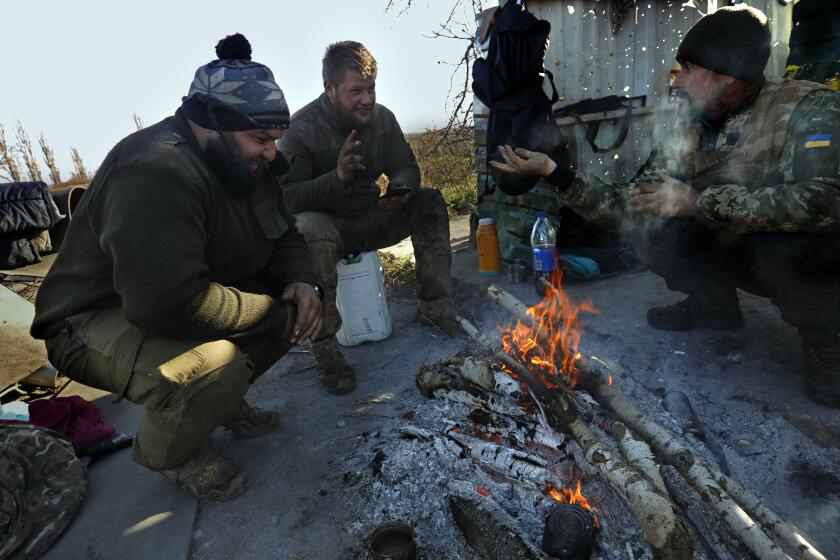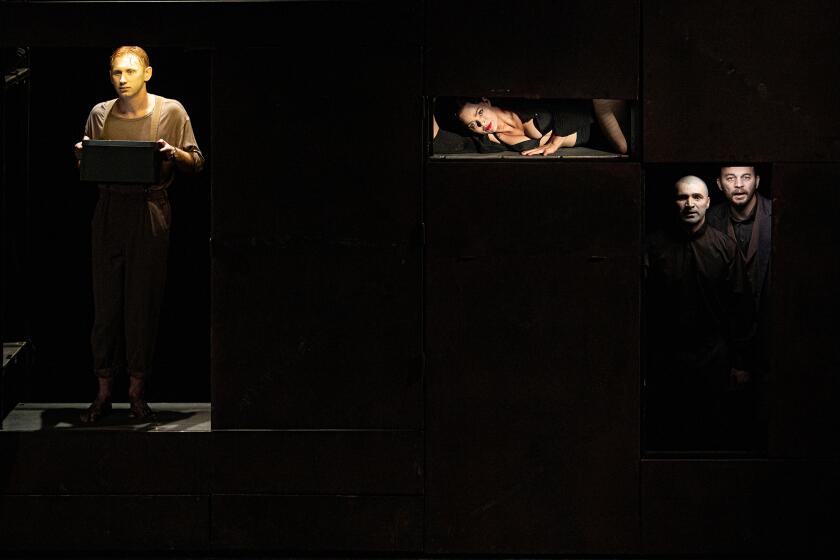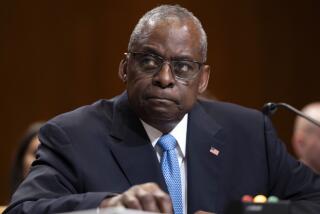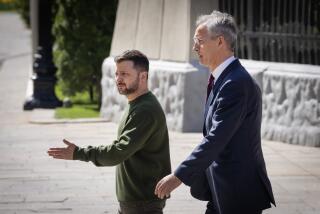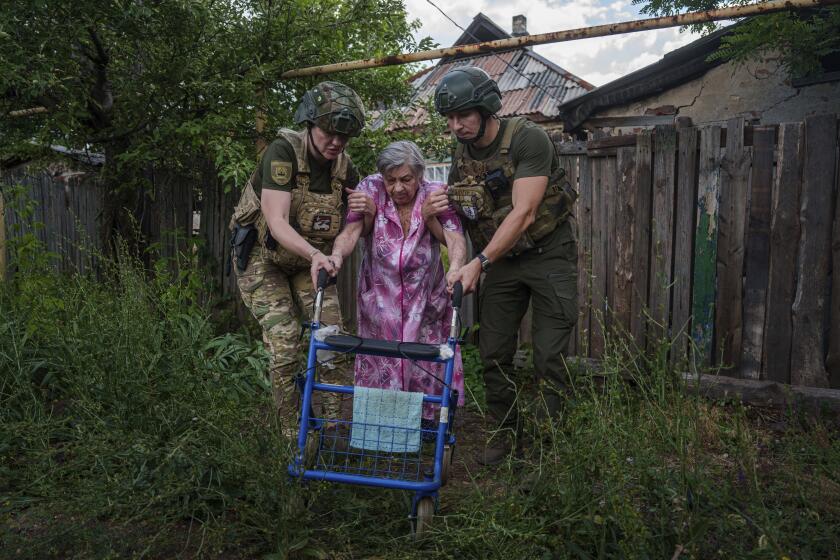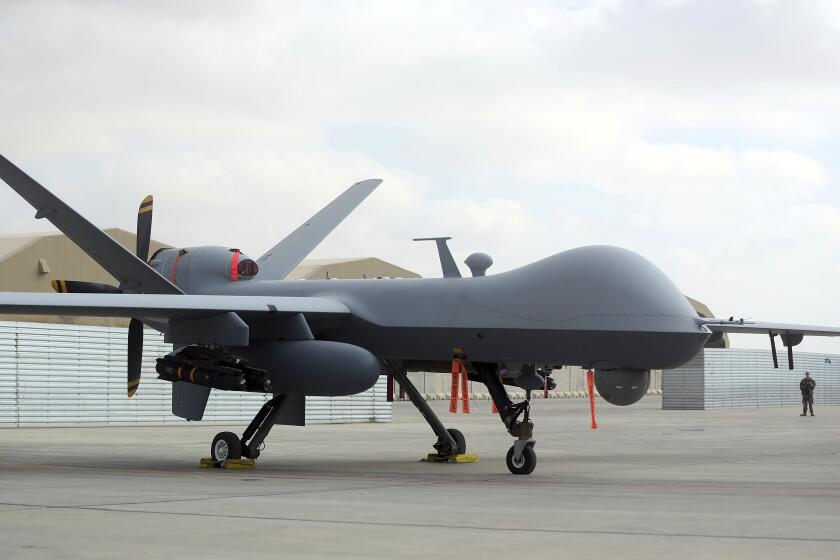Defense chiefs fail to resolve dispute on tanks for Ukraine
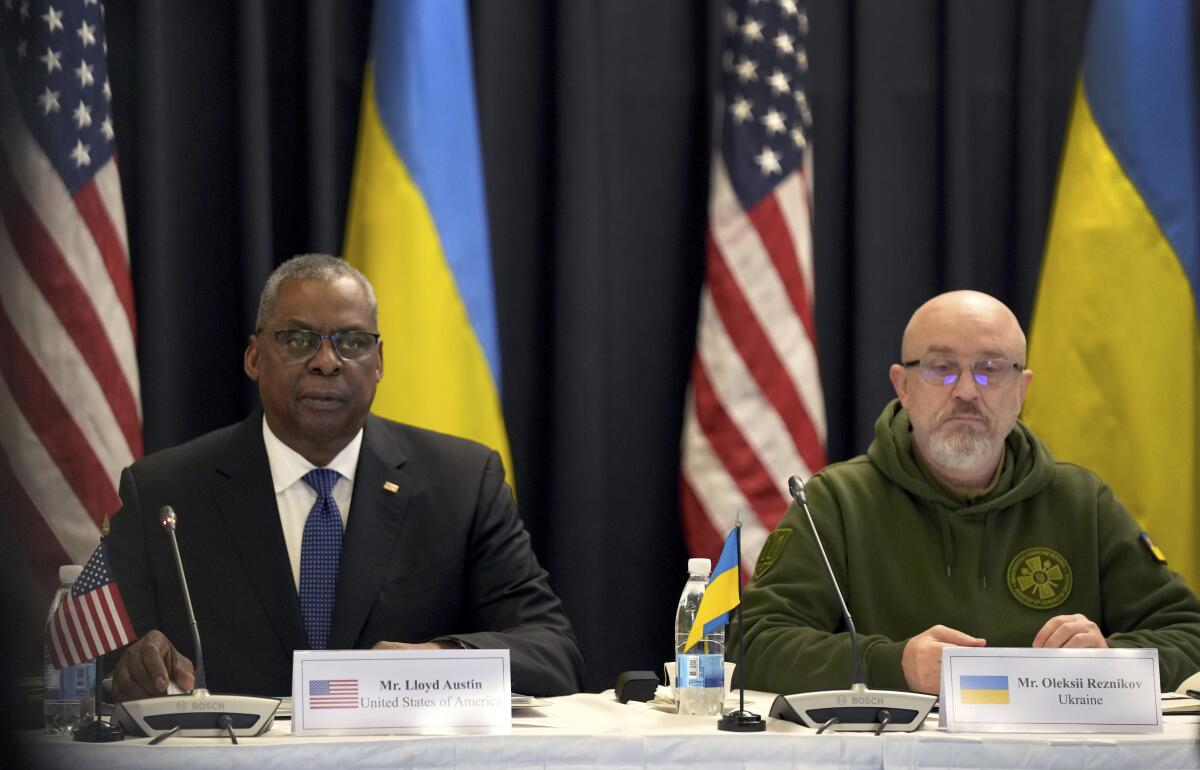
Ukraine will have to wait longer to find out if it will get advanced German-made battle tanks.
A dispute over sending the tanks from Western allies to help Ukraine defend itself against Russia’s invasion played out both in public and private Friday, as more than 50 defense leaders meeting in Germany failed to reach an agreement, stalled by Berlin’s hesitation.
The inability to agree on what has become an urgent request from Ukrainian leaders largely overshadowed commitments from a number of nations, including the United States, to send billions of dollars in equipment and weapons to the war effort.
Though U.S. and NATO leaders denied any dissension in the ranks and praised Germany for its weapons and training contributions to Ukraine, a smaller group of leaders met privately with the Germans to try to find common ground. They were unable to forge a consensus on sending the German-made Leopard tanks.
Polish Defense Minister Mariusz Blaszczak said Friday that 15 countries that have the Leopards discussed the issue but no decisions were made. He called the meeting a “good discussion among allies” and said the matter would be considered again at future talks.
The death toll from the Ukraine war’s deadliest attack on civilians at one location since last spring has reached 45, officials said.
Germany would need to consent for the tanks to be given to Ukraine, which is not a member of the North Atlantic Treaty Organization. Despite pleas from Ukrainian officials, Germany has resisted pressure to quickly supply Leopard 2 tanks to Kyiv, or at least clear the way for other countries such as Poland to deliver them from their stocks.
Asked at the close of the Friday meeting whether Germany was “doing enough,” U.S. Defense Secretary Lloyd J. Austin III responded, “Yes, but we can all do more.”
“They are a reliable ally and they’ve been that way for a very, very long time,” he said. “And I truly believe that they’ll continue to be a reliable ally going forward.”
Austin also downplayed the immediate importance of tanks, noting that Stryker combat vehicles and Bradley armored vehicles being sent for the first time would give Ukraine new capabilities in the war. “This isn’t really about one single platform,” he said.
The defense leaders heard an impassioned plea for more military aid from Ukrainian President Volodymyr Zelensky. Speaking via video link, he told the gathering that “terror does not allow for discussion.” He said “the war started by Russia does not allow delays.”
In Ukraine, a bleak winter lies ahead for combatants and civilians alike, as its army strives to maintain battlefield momentum against Russian forces.
Germany acknowledged there had been no resolution. But, speaking to reporters outside the conference hall at midday, Defense Minister Boris Pistorius said, “We will make our decisions as soon as possible.”
He said he had ordered the ministry to look into the tank stocks Germany has so he can be prepared for a possible green light and be able to “act immediately.” Pistorius added that Germany will “balance all the pros and contras before we decide things like that. … I am very sure that there will be a decision in the short term, but … I don’t know how the decision will look.”
The issue has grown increasingly complicated.
The U.S. has resisted providing its own M1 Abrams tanks to Ukraine, citing extensive and complex maintenance and logistical challenges with the high-tech vehicles. Washington believes it would be more productive to send German Leopards since many allies have them and Ukrainian troops would need less training than on the more difficult Abrams.
U.S. and German officials have given mixed signals about whether the U.S. and German decisions are linked.
A U.S. official familiar with White House thinking said Germany has expressed hesitance to providing its tanks unless the U.S. sends Abrams. The official, who spoke on condition of anonymity to discuss private Biden administration deliberations, added that there was some bewilderment in the administration over the German position, since Britain, another NATO ally, has already agreed to provide Challenger 2 tanks.
Staging of ‘Caligula’ in the Ukrainian capital is cathartic for audience and cast alike. ‘Resonates in this moment,’ says actor who plays Roman despot.
Steffen Hebestreit, a spokesman for the German government, denied that Berlin has demanded that the U.S. supply Abrams tanks alongside any shipment of Leopards.
Meanwhile, a Russian spokesman said the deployment of Western tanks would trigger “unambiguously negative” consequences.
“All these tanks will require both maintenance and repairs, and so on, so [sending them] will add to Ukraine’s problems, but will not change anything with regard to the Russian side achieving its goals,” Kremlin spokesman Dmitry Peskov said during a media briefing Friday.
Austin and U.S. Army Gen. Mark A. Milley, chairman of the Joint Chiefs of Staff, were expected to discuss the latest massive package of aid the U.S. is sending, which totals $2.5 billion and includes the Strykers. It also will provide eight air defense systems, 350 Humvees, 53 Mine Resistant Ambush Protected vehicles, more than 100,000 rounds of artillery ammunition and rockets, and missiles for the High Mobility Artillery Rocket System, known as HIMARS.
Other pledges announced ahead of the Ramstein meeting included S-60 antiaircraft guns from Poland with 70,000 rounds of ammunition, additional Stinger air-defense systems and two M-17 helicopters from Latvia, and two Russian-made Mi-8 helicopters and dozens of L-70 antiaircraft guns with ammunition from Lithuania.
Defense Minister Christine Lambrecht’s resignation follows persistent criticism of Germany’s military modernization and arms shipments to Ukraine.
Pistorius, who took office as German defense minister Thursday, said that opinions among allies were mixed on the tank issue, and added that “the impression that has occasionally arisen that there is a united coalition and Germany is standing in the way is wrong.”
Milley told reporters traveling with him this week that new U.S. training of Ukrainian troops, combined with an array of new weapons and armored vehicles heading to Ukraine, will be key to helping the country’s forces take back territory that has been captured by Russia in the war.
The influx of new weapons, tanks and armored carriers comes as Ukraine faces intense combat in the country’s east around the city of Bakhmut and the nearby salt-mining town of Soledar. The battles are expected to intensify in the spring.
Milley said Friday that the number of Russian dead and wounded is now “significantly over” 100,000, a figure he gave in November.
“This is a very, very bloody war, and there’s significant casualties on both sides,” he said. “Sooner or later, this is going to have to get to a negotiating table at some point in order to bring this to a conclusion.”
More to Read
Start your day right
Sign up for Essential California for news, features and recommendations from the L.A. Times and beyond in your inbox six days a week.
You may occasionally receive promotional content from the Los Angeles Times.

